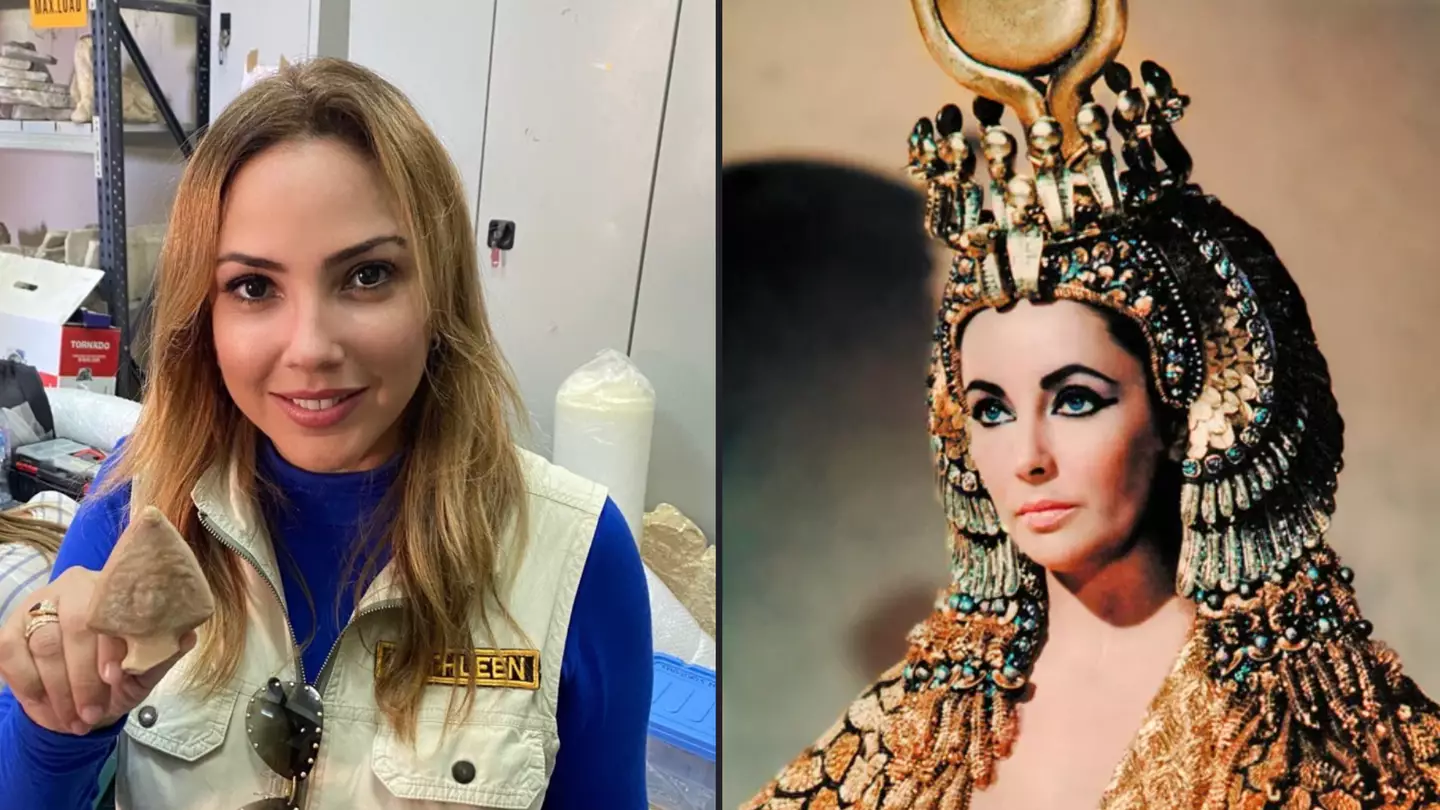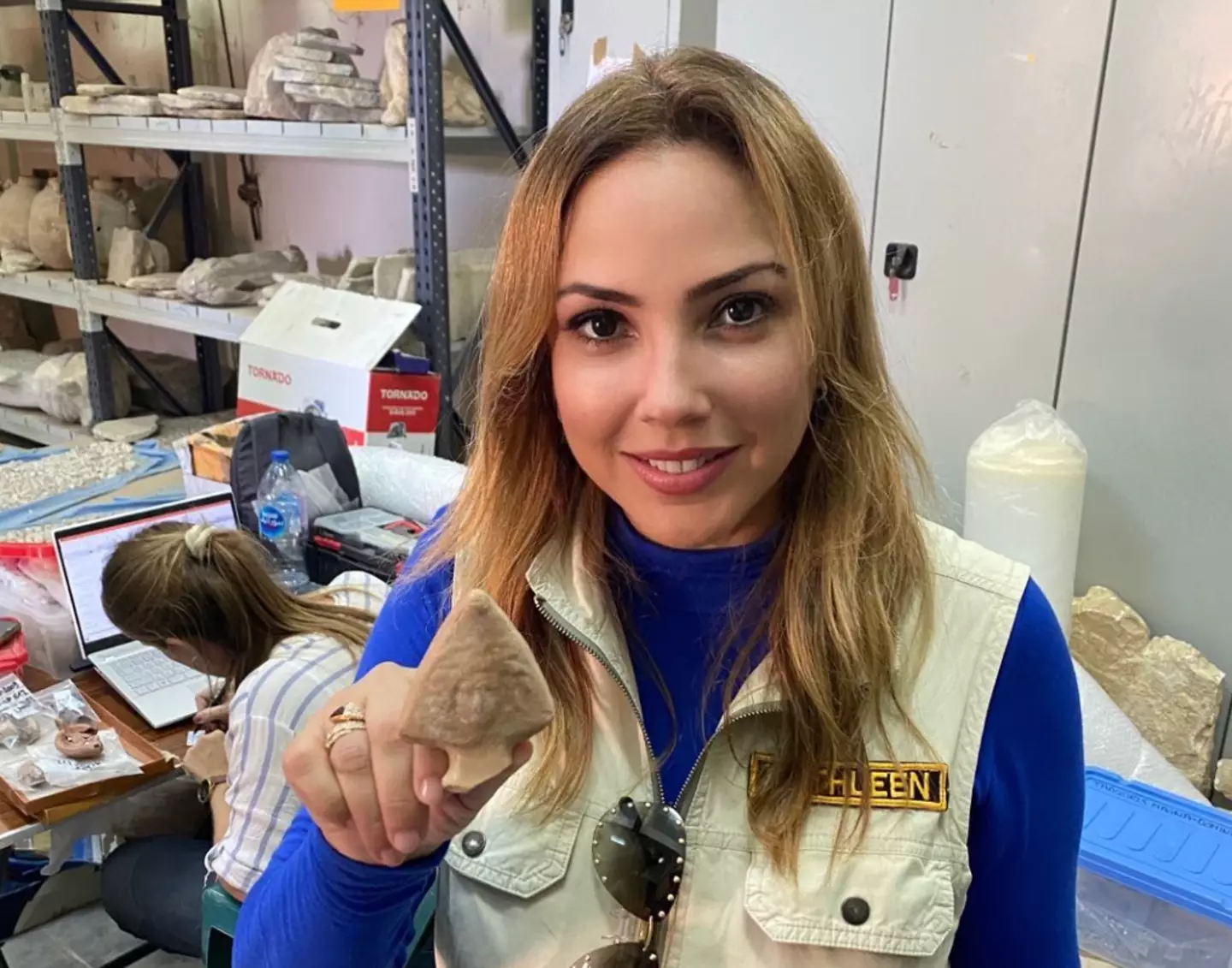
Dr Kathleen Martinez has provided an update in her search for Cleopatra's tomb for the first time since 2022.
Back then, she updated us with the discovery of a tunnel that could have potentially lead to her tomb in the Mediterranean Sea.
Though Cleopatra's tomb may not have been found, it hasn't stopped the intrigue around the ruler's life in pop culture:
The Dominican archaeologist gave a lecture on 13 February, advertising it on her Instagram with a poster that, translated from Spanish, said: "Dominican Archeological Mission in Egypt: Cleopatra; Search and findings. By Dr. Kathleen Martinez."
The lecture was in Spanish, but TikTok user Dr Harini Bhat (@tilscience) got a hand from two of her followers to help translate it so she could update everyone through a seven minute video.
Advert
Dr Martinez has been searching for the lost tomb of Cleopatra since 2005, explaining in the lecture that all 14 Ptolemy Pharaohs from Alexander to Cleopatra are missing.
Egyptologists widely believe they're all buried in the ancient city of Alexandria, which is now submerged underwater, with the remains making up what we know Alexandria as today.
Dr Martinez narrowed her research down to the tomb being most likely to be in the Taposiris Magna temple, which translates to 'great tomb of Osiris'.

She searched for the one artefact to prove her theory that it was a temple for 500 years in dedication to the Goddess Isis, who Cleopatra believed she was a reincarnation of.
Advert
The artefact was a 'foundation plate', which was an iPhone size stone tablet that was placed under major structural stones, and it would have key info about when and why the temple was built.
Teams had been searching for it since the 1800s with the likes of Napoleon left disappointed, but Dr Martinez was optimistic and dug up the whole temple.
Subsequently, they found another temple next to it, also unearthing coins with 'Queen Cleopatra' written on one side and her face on the other.
She also found a processional avenue that went through the main temple and into the Mediterranean Sea.
Advert
However, she needed approval to explore there, with authorities needing the plate as evidence.
And against all odds, the archaeologist found it.
The plate read: "The King of high and low Egypt Ptolemy V lives forever beloved by Isis, son of Ptolemy IV King of high and low Egypt, and his wife, Arsenoe III, both benevolent Gods, consecrated this temple to the mother Isis."
It was concrete evidence that the temple was built for the Goddess, but the issue was no ancient Egyptian maps referenced it.
After finding one temple, she thought the second would be in the sea, as there is usually one temple for the male and one for the female.
Advert
She theorised that if Alexandria was submerged into the sea, surely the second temple could have too.

With more research and by reaching out to Sub-aquatic Archaeologist Robert Ballard (the man who discovered the Titanic) for help, she began her exploration of the submerged Alexandria with approval from the local government.
Egypt even offered resources and equipment of the Marines, and it paid off.
The team found structures that didn't look like sea structures, but that were two to three metres tall in the sea, and they were located where they believe the land they are searching for could have been.
Advert
Basalt was also found in the sea, which is the same material found in statues in the first temple, so it had to belong to a land structure.
They found more than five additional points of interest and are ready to excavate further on their next permit season, with the points reaching as far as 10km out from the coast.
A truly ground-breaking discovery that should have more updates soon.
Topics: History, World News, Science